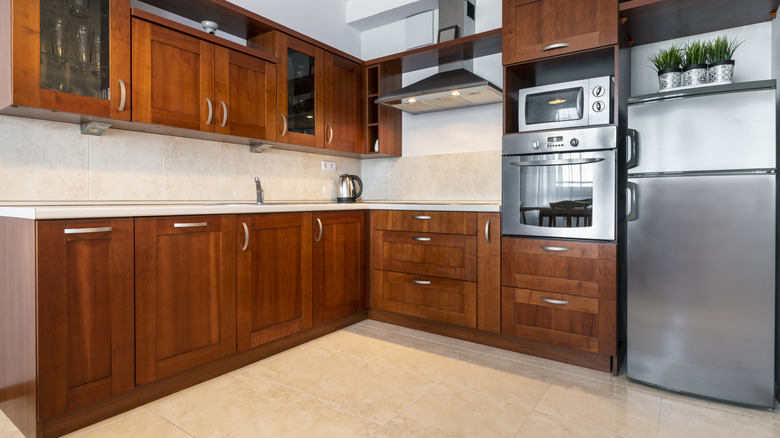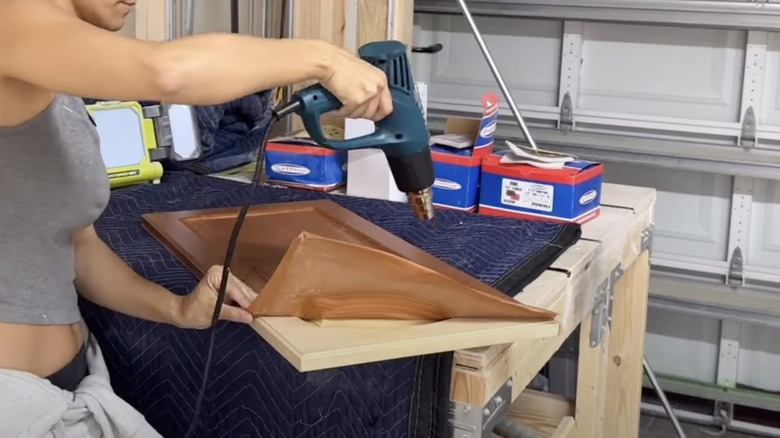Easy Steps For Refinishing Thermofoil Cabinets To Give Them New Life
There's both an upside and a downside to builder-grade cabinets. On the positive end of the spectrum, using inexpensive materials like MDF and thermofoil helps to keep costs down for buyers. However, one of the biggest drawbacks is that they don't tend to hold up very well over time. If you happen to have thermofoil cabinets that are discolored, chipping, or just generally making you feel like you're stuck with an outdated kitchen or bathroom, the good news is that you can easily refinish them to give them a whole new look. It's a much more budget-friendly solution than replacing them altogether and a great way to work with what you already have.
Thermofoil is a type of vinyl laminate that is heated and stretched over MDF cabinets. It comes in many colors as well as faux wood grain finishes, and it gives cabinets the illusion of either being wood or painted wood. While it's affordable, it's prone to blistering, peeling, and yellowing, especially when exposed to water or heat. There are two ways you can refinish thermofoil cabinets — either peel the thermofoil off the surface of the cabinet or paint over it. Though the latter method is somewhat controversial since thermofoil is a slick vinyl surface that can be tricky to paint, many DIYers have had success with it.
Removing thermofoil from cabinets v.s. painting it
Though removing the thermofoil from the cabinets is a more time-intensive process than painting over it, you won't have to worry about the paint peeling or chipping down the road. To get started, use either a heat gun or hair dryer set to high heat to loosen it, and then carefully peel it off. Next, clean off any residual glue, sand, and then prime. We recommend a shellac-based primer, as a water-based primer could cause the MDF to swell. Once dry, paint two coats of your preferred cabinet paint.
If the thermofoil is still in fairly good condition and you'd like to paint over it without removing it, start by thoroughly cleaning the surface. Next, lightly sand the cabinets and then apply a coat of a stain-blocking primer with high adhesion, such as Zinsser Bulls Eye 1-2-3. Once dry, roll on two coats of your preferred cabinet paint using a foam roller. Resist the urge to keep smoothing out the paint, as it will self-level as it dries.
Want to level up the style of your cabinets? You could give them an antique look by applying a dark glaze over the paint and wiping away the excess. Or, seal the paint with a high-gloss topcoat to give it a shiny, luxe vibe. You could also add crown molding to the top, switch out the hardware, or attach wood strips around the perimeter to lend a highly popular, Shaker-style look.

